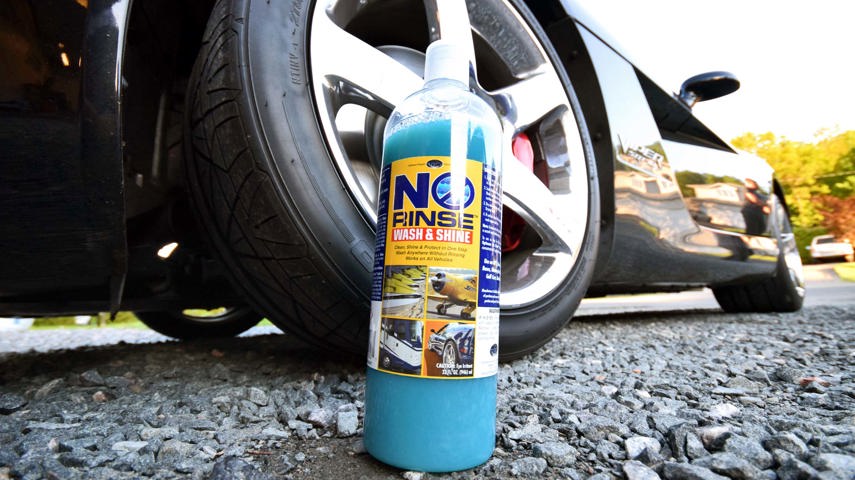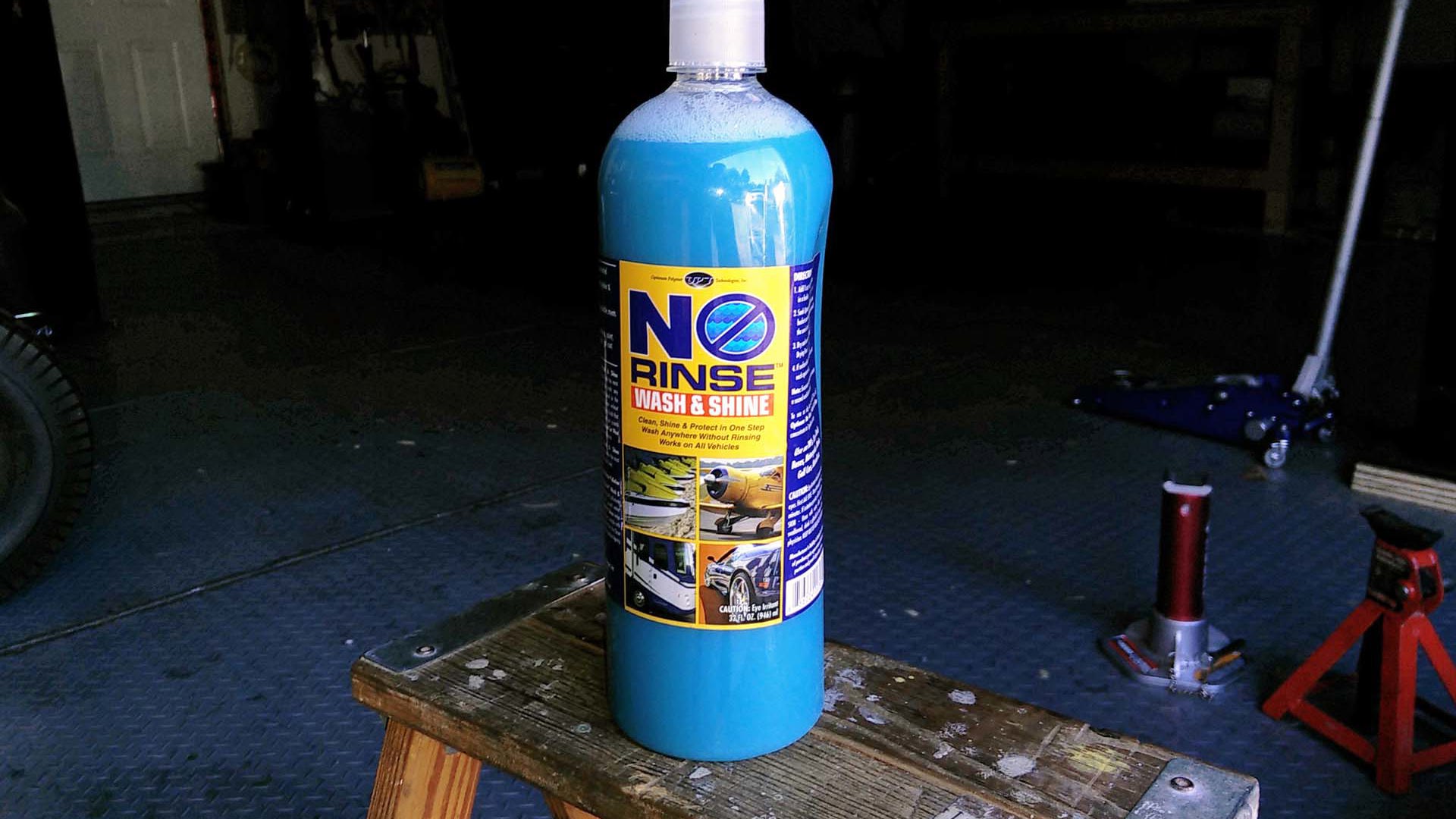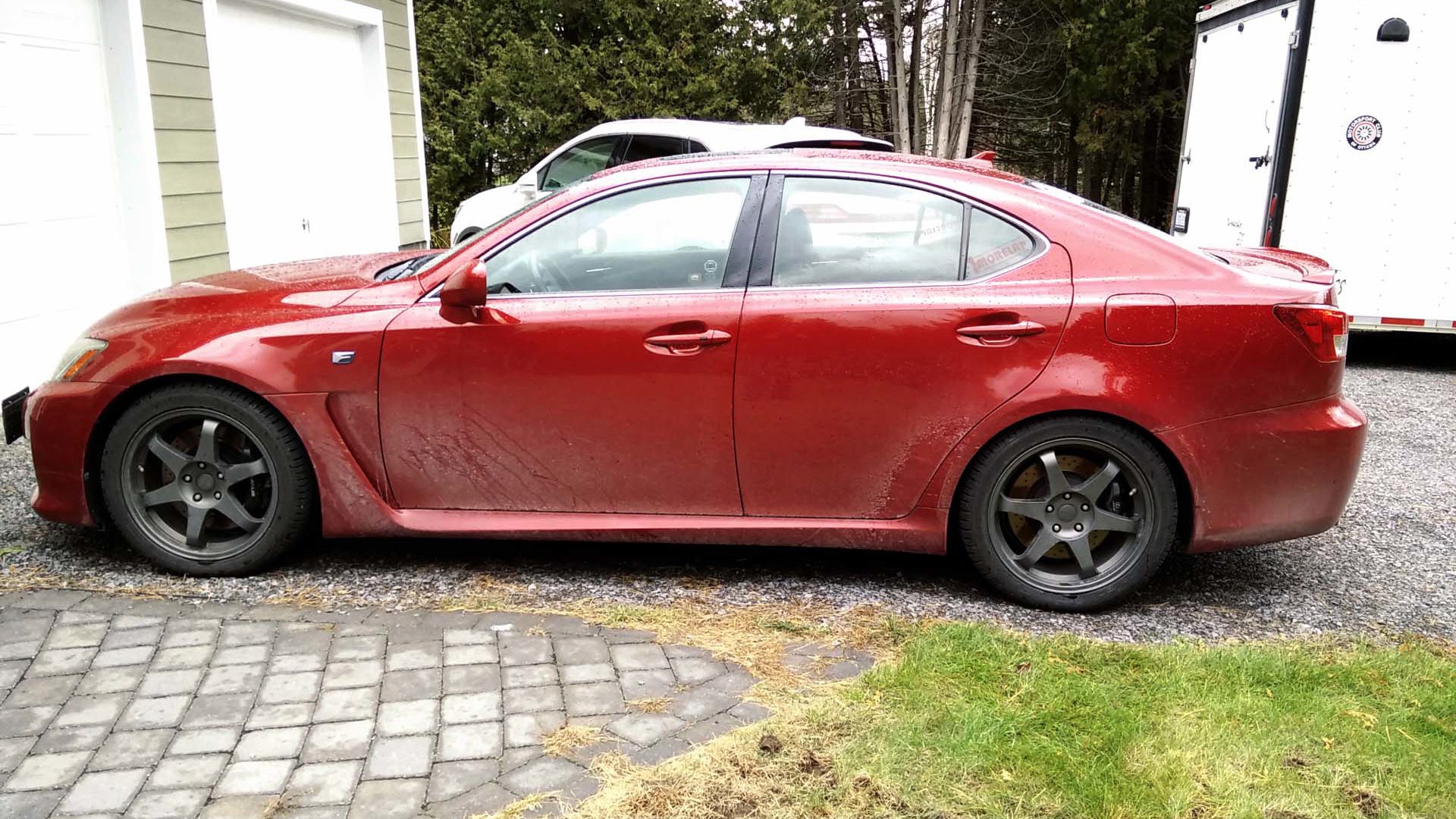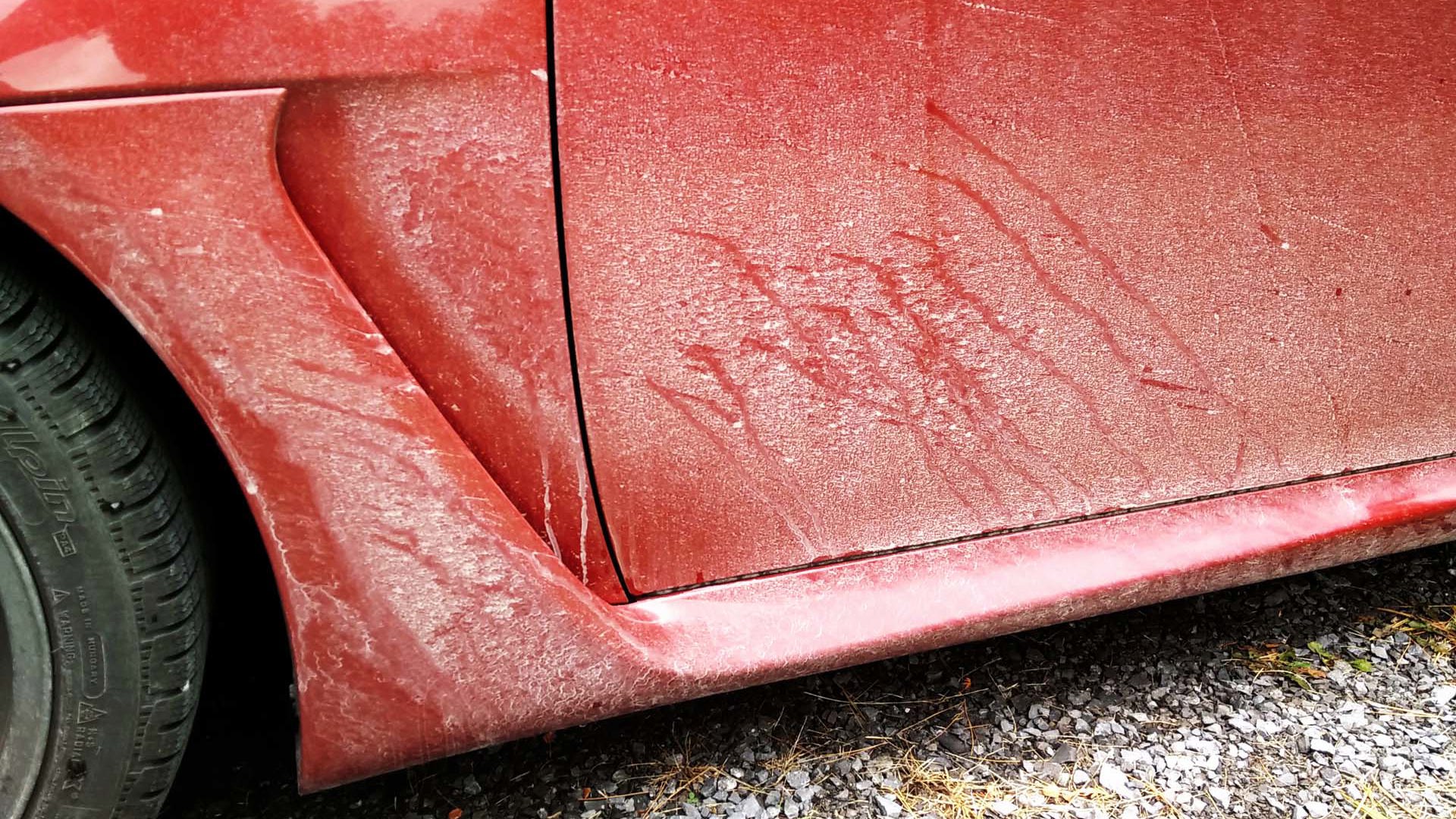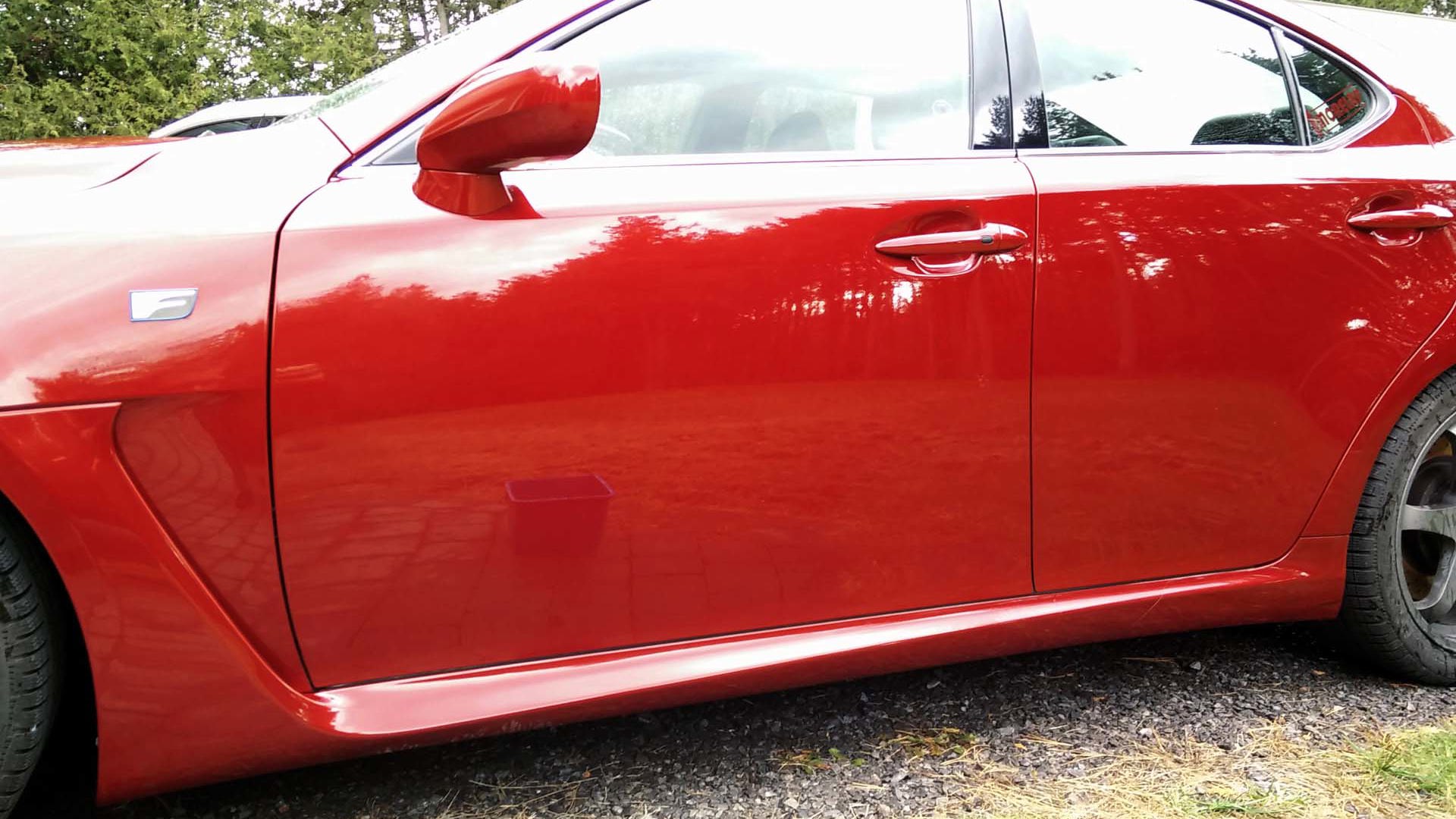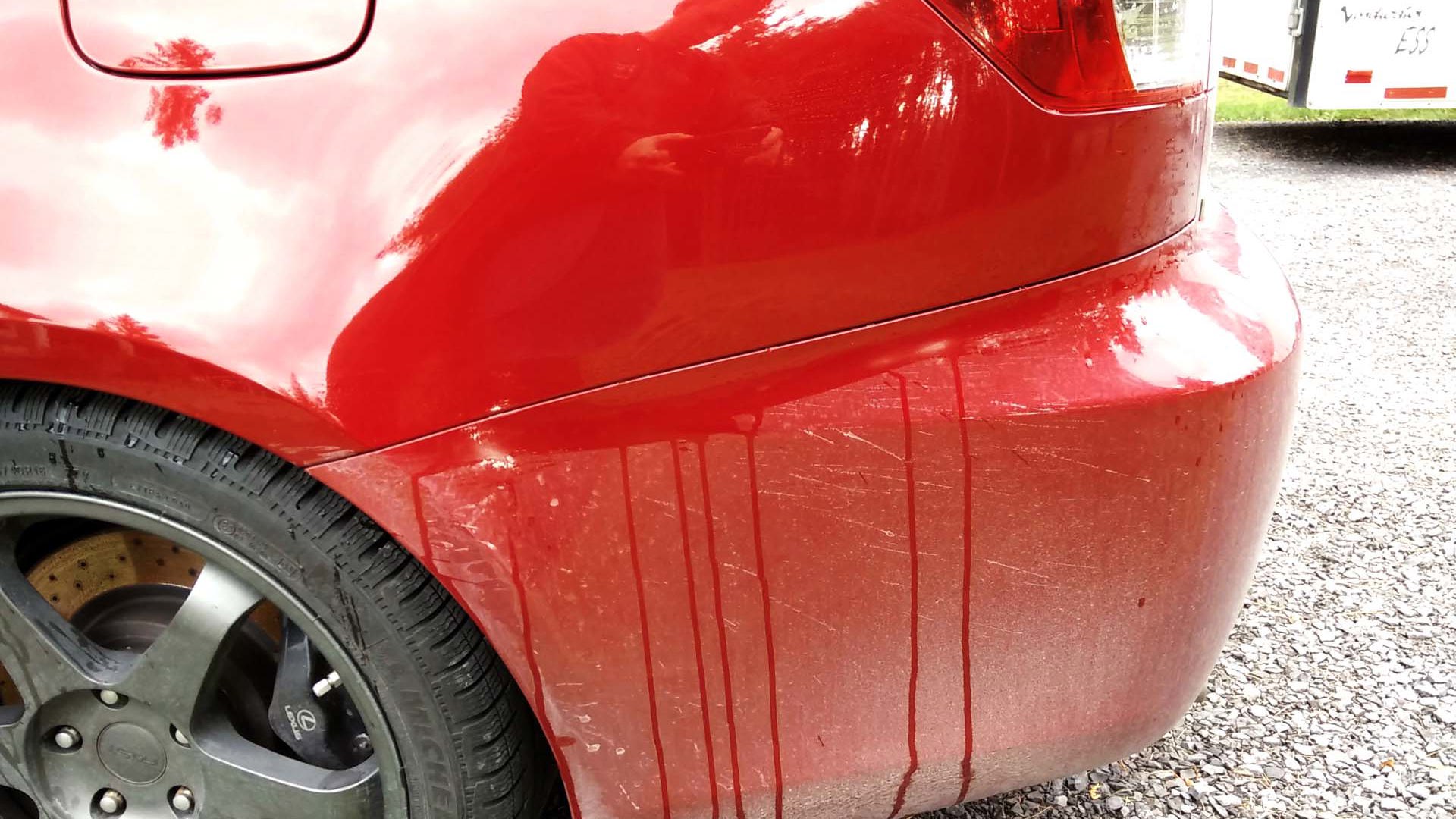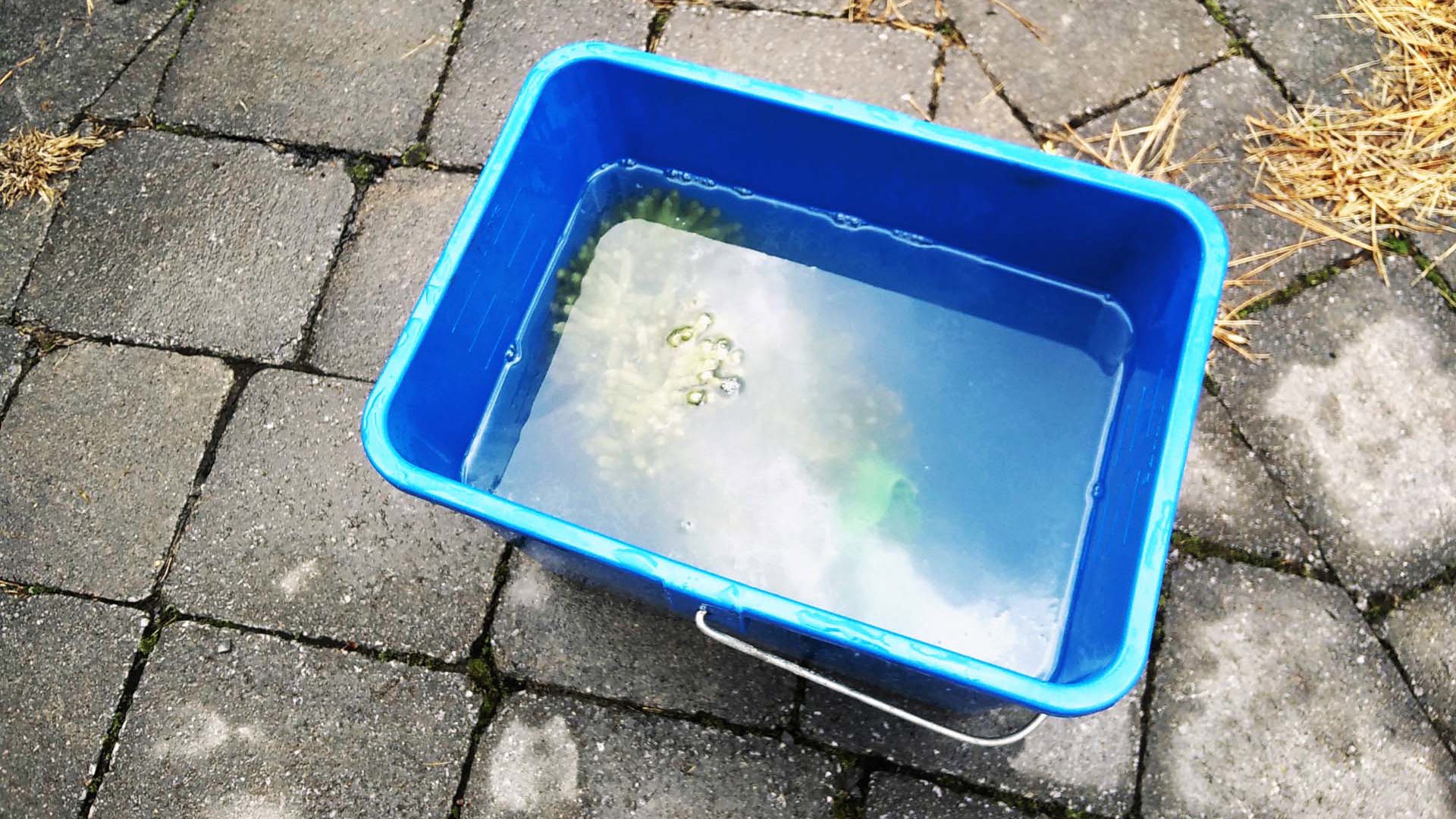Photography by Justin Pritchard, additional photography by James Bergeron
If you’re washing your car or truck using a big pail of suds and your garden hose, you’re likely hurting your paint while wasting time and money. Some years back, a professional detailer pal of mine suggested I give something different a try. Optimum No Rinse, commonly abbreviated ONR, is a pleasant-smelling creamy liquid that is sky-blue in colour that you mix with water to wash your ride.
Various “waterless” or “hoseless” car-wash products are available, many of which suspend a wax or gloss additive within a solvent that’s sprayed onto the vehicle’s paint while drying it, before being buffed off. A key selling point of ONR over other waterless car wash products is that word: “buffed”. Buffing off a spray wax or similar waterless product can require applying pressure to painted surfaces, which can lead to scratching if any abrasive particles wind up introduced into the mix.
With ONR, there’s no buffing. Instead, its formula softens the wash water and attacks dirt at the molecular level. The dirt’s “grip” on your paint is broken as particles are encapsulated in a bubble of slippery polymer, so you’re basically lubricating the dirt away. ONR requires only a minimal light touch to wipe off, so there’s less stress and wear on your paint.

Getting Started
Because the bottle contains a concentrated solution, you’ll need a few jugs of distilled water, which can be found at your local grocery store for about a buck. The distilled water helps reduce water spots, which is important if your car is a dark colour.
Next, you’ll want a wash pail that has a false screen “floor” or grit-guard, along with a large sponge. A special wash sponge is typically included when you buy an ONR starter kit – it’s just a regular sponge with slits cut into it. Depending on the application, a spray bottle or pump-action garden sprayer also works nicely.
Finally, to dry off the car once you’re done, you’ll want some high-quality, absorbent, lint-free rags.
There are several ways to use ONR based on the job at hand, and how strongly you dilute it with water. You can find ideas on YouTube and elsewhere online, but I’ve outlined the two that worked best based on my testing.
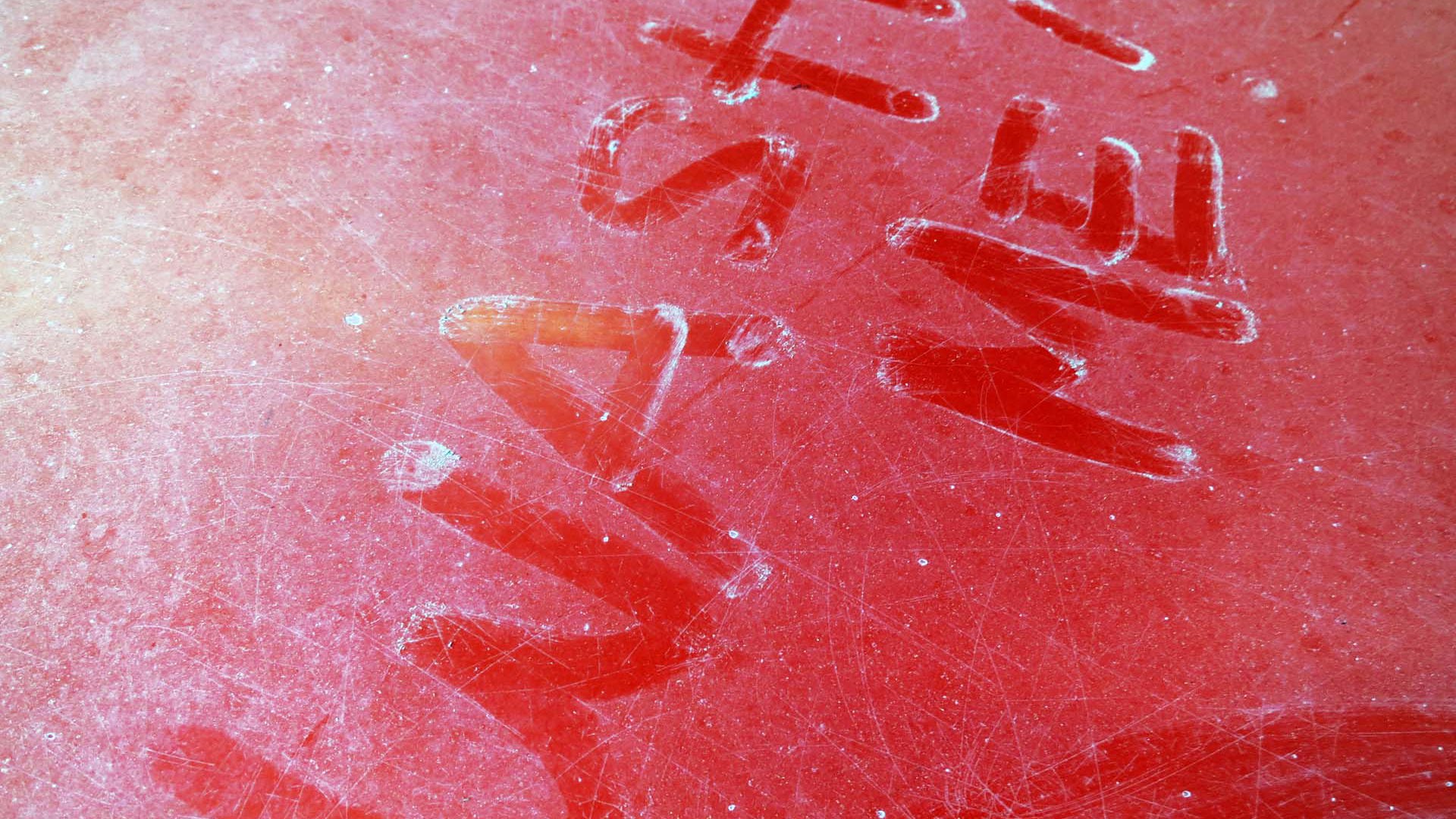
Bucket and Sponge – Ideal for Dirtier Cars
First, add an ounce of ONR to your wash pail. Next, insert the grit guard into the bottom of the pail; this will keep your sponge from contacting the gritty sand and dirt particles that will accumulate at the bottom.
Then, visit your nearest sink and add two gallons of water. Note that doing so causes no suds, because ONR is not soap, and contains no soap. Rather, it’s a polymer-based fluid that you might describe as being slightly slimy or oily. Slosh things around, wonder where the suds are, and return to your vehicle.
Dunk your sponge into the solution, and wring it out so that it’s wet but not dripping. Working one body panel at a time, wipe the sponge in straight lines across the panel surface. Wipe lightly, let the product do its job, and only wipe in one direction.
Once you’ve finished a panel, use a rag to wipe the remaining moisture away – also in straight lines and in a single direction. Fold the rag over itself every few passes, so you’re working with a clean surface.
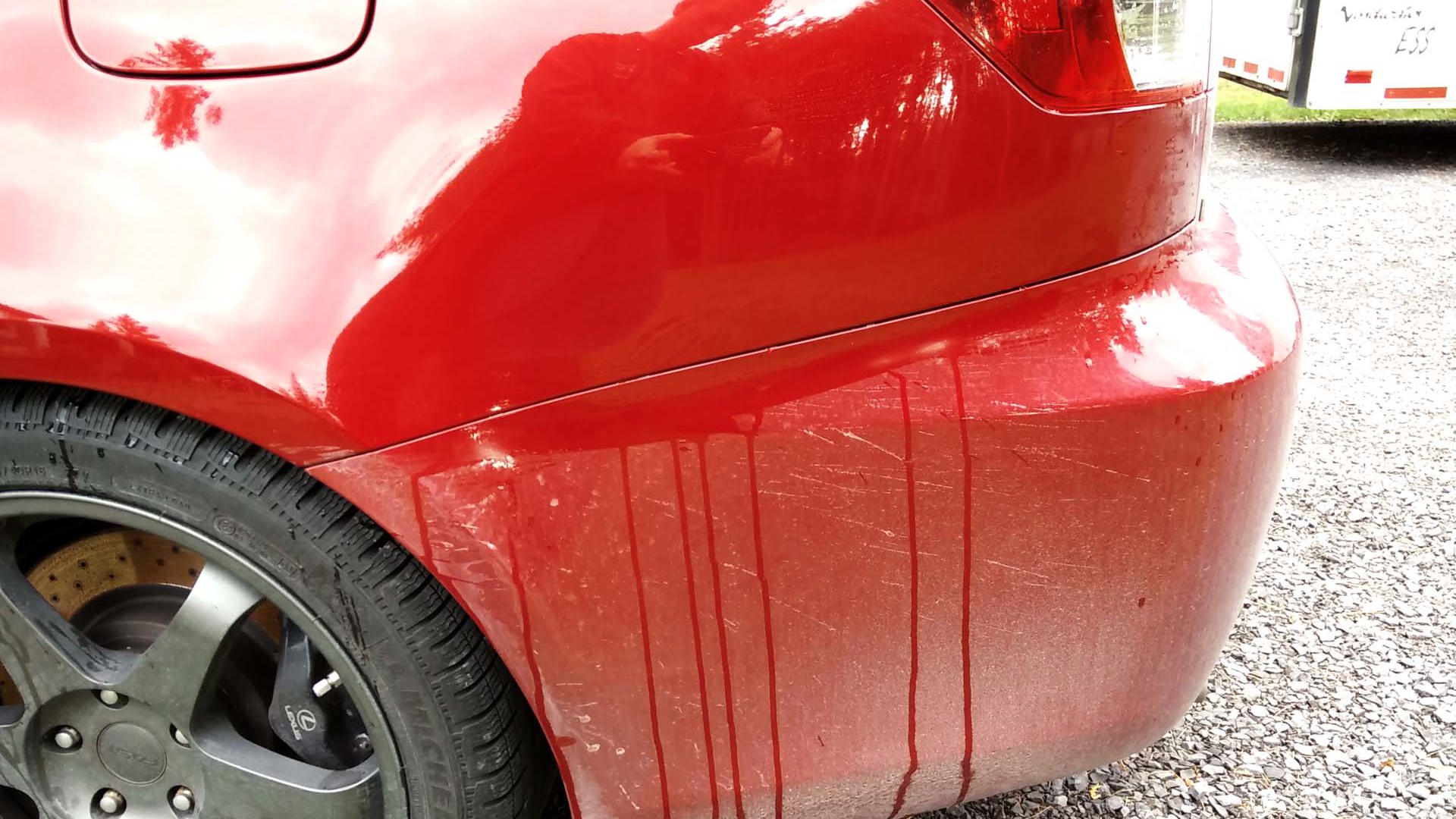
That panel is now done. Dry. Clean. No hose. No scrubbing. No pre-wetting or rinsing. No water dripping out of mirrors and door gaps and leaving water spots behind. Minimal pressure and stress applied to your paint.
Dunk and swirl the sponge, wring it out once again, and repeat for each panel. Voila! You’ll be finished washing in no time, and you never needed to touch the hose.
ONR is super slippery. This means that, even without wetting your car first, this process won’t scratch your clearcoat. And, after the wipe dry, you’ll notice perfectly clean paint, with a slight slickness and gloss left behind. This hose-free method means you could wash your car in the garage on a rainy day, so it’s nice and clean for that Sunday cruise. At most, you’ll have a few puddles on the floor, which will quickly evaporate.
In my experience, ONR was effective in removing surface soil, no elbow grease required. Also, since you’re doing just one panel at a time, you’ll tend to work more carefully and attentively, and be in less of a rush. Translation? Using ONR will probably make it easier for you to do a better job, in less time, while putting less wear on your paint.
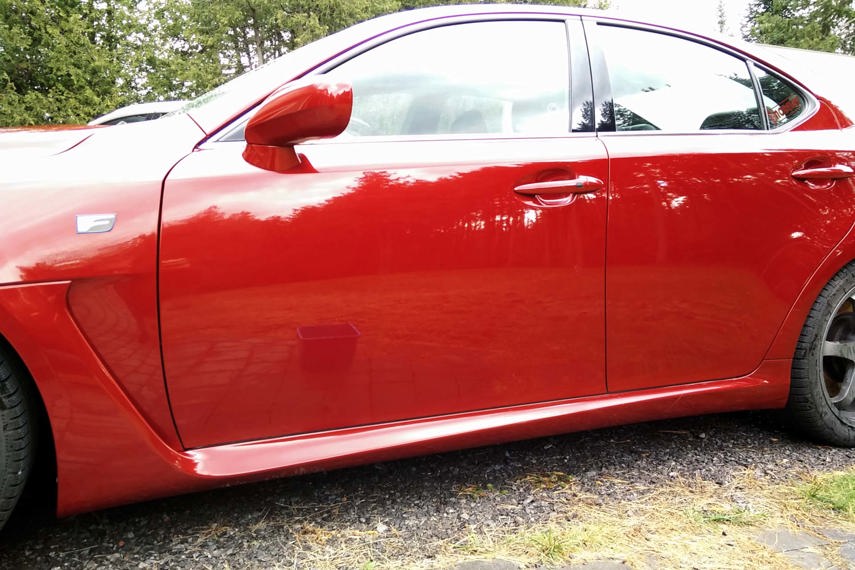
Spray and Wipe – For Less Dirty Cars
If you’re in a rush, or if your car isn’t excessively dirty, this method is even faster. Mix up a solution of about 1.5 ounces of ONR per litre of distilled water in a spray bottle. I like to use a pump-action garden sprayer, but dual-wielding handheld squirt bottles works just fine.
Next, move your vehicle into the shade, or ideally, inside of a garage. Soak the entire vehicle liberally with your sprayer of choice. Get all of the paint sopping wet. It should be dripping slightly onto the ground beneath. Remember, mixing up a litre of this solution costs you about two bucks, so don’t be shy.
Then, take a couple of your clean high-quality absorbent rags and fold them into rectangles. Use the surface of each rag to wipe your paint dry, one panel at a time. As above, use straight lines, and fold the towel with each few passes to keep the drying surface clean.
Simply, you’re soaking your car, then carefully drying it off. When you’re done, it’ll be clean as a whistle, glossy, and lustrous as can be.
I’ve used this method to wash test-cars before filming them. It takes me about four minutes, but may not be ideal on cars that are very dirty. Notably, with this method, you literally just need a spray bottle of the solution and a rag, and that’s it.
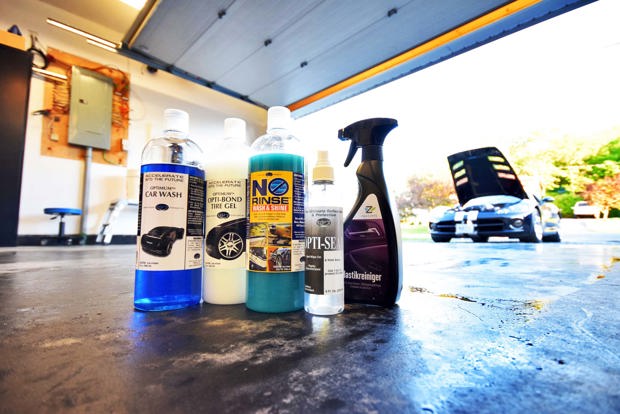
Pros and Cons
There are a few downsides. First, as handy as ONR is, it works best when used like car-wash soap. This means you can’t use it if its very cold outside because it will freeze to your paint and smear. As is the case with washing a car in any manner, it’s best used in the shade, on cool paint.
Also, ONR seems to work best on vehicles that aren’t heavily soiled. If you’ve recently been off-roading, or haven’t washed your car all winter, I’d rinse away built-up dirt and salt with a hose before completing an ONR wash. Bug guts can pose a particular challenge for ONR, since it doesn’t contain harsher detergents or chemicals that can break them down. If you’re ride is caked with dead insects, these may require additional cleaning steps or products.
Finally, in some cases, owners of dark or black cars may notice faint streaks on their paint. This is almost always caused by using a drying rag that’s too wet, or too dirty – though it can also be a sign that you’ve mixed your ONR and water solution at too high a concentration. Reapply and re-wipe the surface to eliminate streaks, if needed.
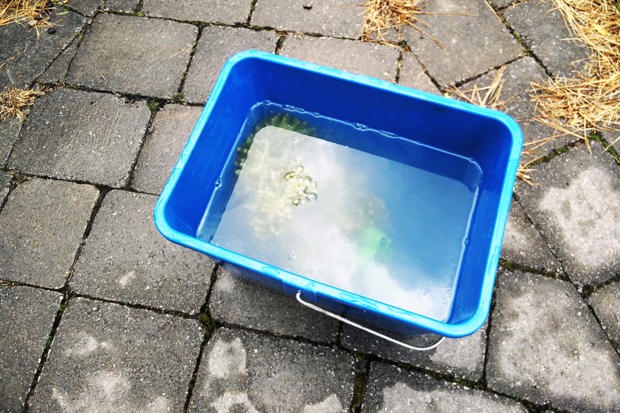
Other Observations
ONR wash solution feels slimy and oily. This is normal and helps prevent scratches. Your wash sponge may look dirtier than normal when using ONR. This is intentional, as the product causes small particles to bond to the sponge. Since the formula contains no detergents or toxic chemicals, you can use leftover solution to water your flowers – as long as it hasn’t been contaminated by the dirt and grease from washing your car.
Alternatively, the leftover solution in the pail from the first method makes a great (and super-mild) all-purpose cleaner for your dash and door panels. I also use it to wash dirty windows, and to clean lightly soiled wheels. The spray solution from the second method, meanwhile, is the best glass shower-door cleaner I’ve ever used. It also does a lovely job of cleaning eyewear.
With car-wash season approaching, you may want to give ONR a try too. Using it requires some changes to your car wash routine, but ultimately it uses far less water and is much easier to use. ONR is available at car care supply centres and online retailers. A 16-ounce bottle costs roughly $22.00 (as of writing) and should last a full season washing a car once or twice per week.
